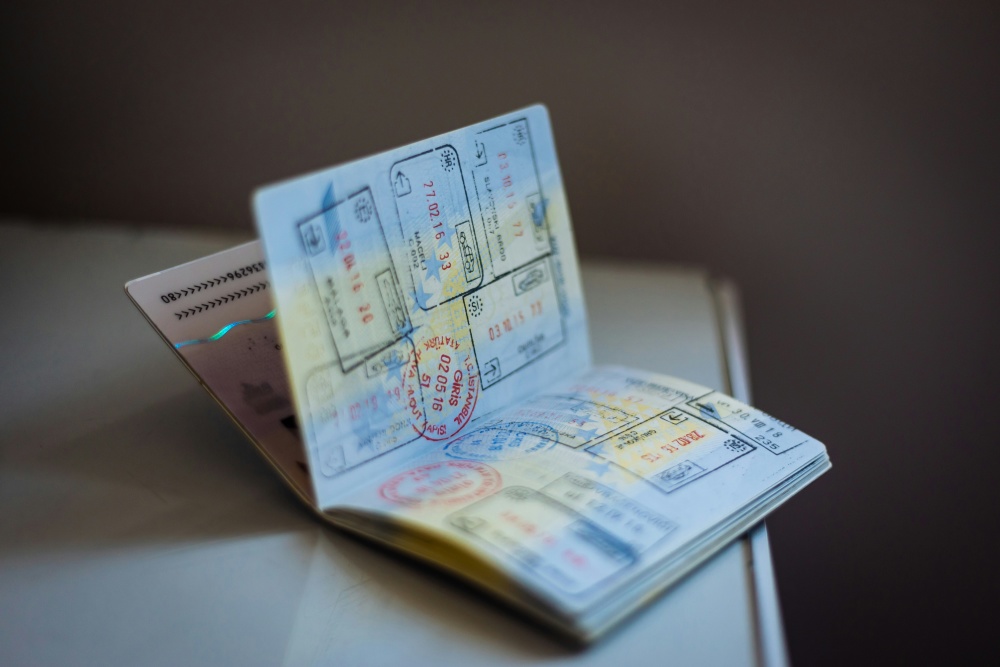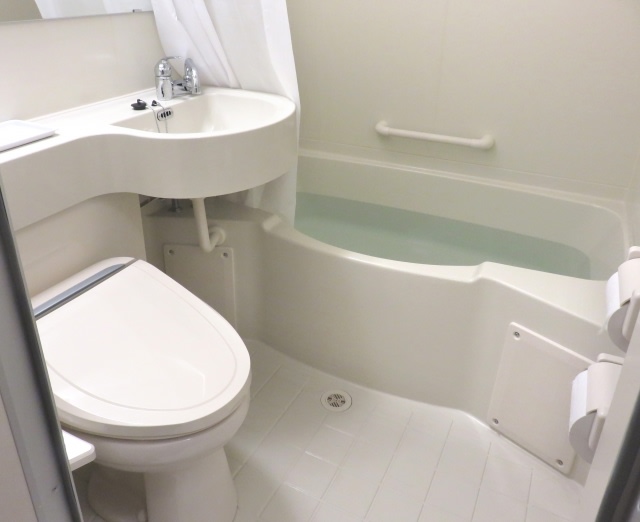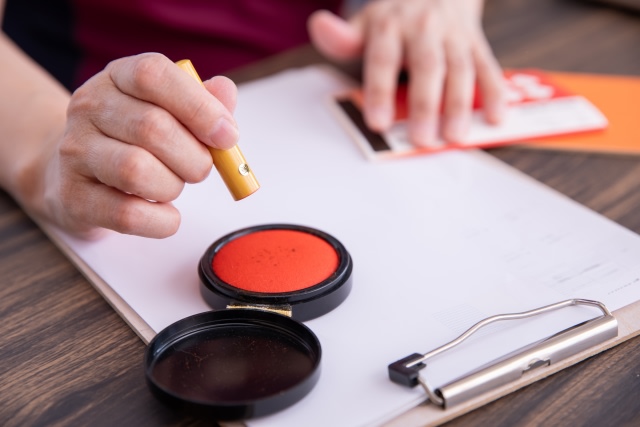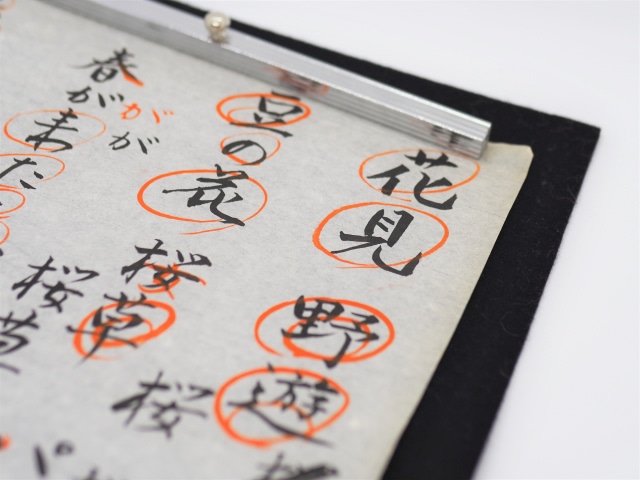Updated July 11, 2025
Taking the leap: How to move from the U.S. to Japan
So you want to move to Japan from the U.S.! Moving to Japan can look like a daunting task: You have to get a job across the ocean, submit all the paperwork for a visa, and arrange to move your life to a new place with a different culture and language… And that’s before you even arrive!
There are so many details to a move, and so much of it is based on your individual situation. This isn’t an exhaustive breakdown of what you need to move to Japan. But I hope that it will give you some idea of what to expect and provide some helpful hints to face the challenge.
In this article: 📝
- Things to prepare in the U.S.
- 1. How do I get a visa?
- 2. Do I need to learn Japanese?
- 3. Do I need a Japanese driver’s license?
- 4. What should I bring from the U.S?
- 5. How much money should I set aside for moving to Japan?
- Things to figure out in Japan
- 1. Finding an apartment in Japan
- 2. Opening a bank account and getting a credit card
- 3. Meeting new friends
- Final thoughts
Things to prepare in the U.S.
1. How do I get a visa?
There are many ways to move to Japan. But if you want to stay in Japan for more than 90 days, you typically need a job or to be accepted to a school.
Japan Dev offers a variety of jobs that you can apply to from abroad. Once you have a job, you can decide what visa to get as an engineer. (And if you don’t have a passport yet, get one!)
Japan also introduced a digital nomad visa in January 2024. With this new visa, you can live in Japan for a maximum of six months. Unlike a working holiday visa, you can continue to work at your current job remotely while you get a feel for living in Japan. (Of course, if your current job allows!)
You can’t renew the digital nomad visa, and you have to take out private health insurance for the length of your stay because you won’t be eligible for Japanese national healthcare due to not having resident status. The minimum annual income to be eligible is also high, though the weak yen helps a little.

To apply for a visa, you first need a Certificate of Eligibility (COE). The paperwork needed to obtain one is usually done by the institution sponsoring you in Japan, like the company you will work for or the school you will attend.
Your COE proves that you meet the requirements to get a visa, like your financial stability and health condition. I remember having to get a health exam in the U.S. to fill out a form for immigration. One thing that confused my doctors was a test for tuberculosis!
Once you have received your COE from your sponsor in Japan, you can apply for a visa at the embassy if you are a resident of Washington, D.C., Virginia or Maryland, or at your nearest consulate for the rest of the country.
Keep in mind that you have to turn in the documents and pick up your passport in person after the process is complete. You can have a proxy turn it in for you, but they will need to present this authorization form and their photo ID.
Check the rules and list of documents required by your consulate for your visa application, as it might be a little different. You may need to make an appointment or prove your residence in your state. Some processes might be possible online.
The embassy or consulate will take your passport and keep it until your application has been processed. The embassy gives an estimate of 5 business days for processing and will not accept applications more than 3 months before your departure date.
U.S. citizens and citizens of the countries on this list are exempt from paying visa fees.
2. Do I need to learn Japanese?
This is a tricky question. Professionally, if you have a skill in high demand, you might not need to. Japan Dev has a variety of job listings that don’t require any Japanese skills to apply!
But in order to really feel at home in Japan, you need some conversational skills.
In the jobs I have worked for the last seven years, a high level of Japanese ability was also required. There are emails, meetings with clients, negotiations, understanding of written contracts…
But some of my coworkers at my current company don’t speak Japanese at all. They rely on other staff to interpret meetings and conversations and translate documents for them. If a company really wants the skills you have to offer, they will support you in the office.
One of my coworkers has been living in Japan for as long as I have – roughly ten years. He knows some vocabulary but has never been conversational. He has all the support he needs to do his job, but still doesn’t understand a lot of what happens around him in the office or out.
He told me it can get very lonely, and I can imagine. I had trouble when I first came here as an exchange student and couldn’t really follow what was being said around me. Making friends was always just a little beyond my conversation skills.
To be able to read menus, do tasks like making appointments, chat at lunch with coworkers, and even to have a random talk with a grandmother on the bus, I recommend taking the time to learn Japanese.
There is so much insight you can gain into a culture by studying the language. It will benefit you both on and off the clock.
Of course, language learning isn’t for everyone. Even if it doesn’t work well for you, there are a handful of other careers that don’t always require Japanese. As long as you are open to meeting people and learning about Japanese culture while you are there, you will do fine.
3. Do I need a Japanese driver’s license?
Japanese cities have extensive public transportation systems. If you are living alone in any of Japan’s big city centers, like the greater Tokyo metropolitan area, Osaka, or Fukuoka, then a car might be more trouble than it's worth.
If you are in the suburbs or in smaller regional cities, a car might be a necessity. It all depends on the area and the distance you will need to go during your daily life.
The good news is that you can get an International Driving Permit from AAA before you leave. You can apply at your nearest AAA Travel office, or you can apply by mail.
The International permit is good for one year, so you have time to decide if you need a permanent driver's license or not.
Even better news if you got your driver’s license in Ohio, Oregon, Colorado, Virginia, Hawaii, Maryland, or Washington state: You can switch over your driver’s license to a Japanese one when you get to Japan without taking the exam!
You still need to take a short quiz and get your eyesight and hearing tested, but you don’t have to go through the stress of taking the written exam and road test. (Indianans, you just have to take the knowledge exam, which they offer in English.)
I still recommend going to a driving school in Japan to get used to driving on the left side of the road, though! Many schools have courses for “paper drivers” – people who got their license but haven’t driven in years or at all.
It is harder than you think to drive not only on the other side of the road, but also with everything inside the car flipped. Make sure you get a feel for it somewhere safe before getting on the road in Japan!
4. What should I bring from the U.S?
To be honest, things from America are more available than ever before. But you should still bring comfort items that are familiar when everything else is new or foreign.
・Foods and snacks for dietary needs
Over the years, I used to take things like peanut butter and gluten-free snacks. But even gluten-free soy sauce is available in Japan, and vegan and gluten-free restaurants are more common.
If you are vegetarian, vegan, gluten-free or have other dietary restrictions or allergies, I recommend taking what you might need. Especially snacks. You will still have to prepare a lot of your own food.
My friends still bring me hot Cheetos!
・Your go-to allergy medicine
My pollen allergies actually went away when I moved to Japan, probably because of a difference in what blooms here. But many people find theirs get worse. If you have a go-to allergy medicine, be sure to bring some to hold you over until you can get more in Japan.

・Three months of your prescription medications
One important thing to note is that if you take any medications, you should look into whether or not they are available in Japan and if they require prescriptions.
A limited amount of some medicines can be taken into Japan. If you are taking more than a month supply of prescriptions, cosmetics, or medical devices, you have to apply for a Yunyu Kakunin-sho (輸入確認書). You can also apply online.
If the medicine you need is available in Japan, figure out a plan to see a doctor to get a prescription while you still have a supply left from home. Sometimes you have to wait more than a month to see a new doctor, so give yourself enough time.
Keep in mind that some medicines are banned in Japan, such as some used to treat ADHD. Make sure you check out this list.
・Toothbrush and toothpaste
I am not picky when it comes to toothpaste, but when I think about it, toothpaste is more dense and grainy and the mint might not be the mint you are used to.
You might have heard that there is no fluoride in Japanese toothpaste, but it is now becoming more common.
Toothbrushes are also a bit smaller and the bristles often softer. You can always get used to these items later, but it is good to have a part of your routine that hasn’t changed when starting out on a new adventure.
・Deodorant and/or antiperspirant
There is deodorant in Japan, but most are sprays or roll-on liquids. Stick deodorant is almost non-existent and antiperspirant isn’t really a thing either. Of course, you can go looking for a special shop or order online (Amazon, iHerb), but I still buy deodorant in the U.S.
You will find smell to be a bit of a problem during the hot and humid summers. While you can’t get the people around you on a packed train or in a small office to try using some, you can make sure you aren’t disrupting the office harmony.
・Makeup and other cosmetics
If you aren’t accustomed to using Japanese makeup, I recommend taking your makeup with you, especially foundation. There aren’t many options for darker skin tones, and even if you have light skin, the tone might be off. The colors of things like eyeshadow and lipstick are also adjusted for Japanese skin tones.
Just make sure to check if you need Yunyu Kakunin-sho for some cosmetics!

5. How much money should I set aside for moving to Japan?
This is a tough question! It depends on so many things, like where you live in the U.S., your living situation planned for Japan, when you will get your first paycheck, etc. These are a few things you will need to account for.
• Plane ticket
First, you have to get to Japan! Prices vary depending on where in the U.S. you are departing from, how many transfers you make, the time of year, and how far ahead you book.
If you are flying from LA, the ticket can be anywhere from $900 to $1,500, and you might get a good deal or want to fly more luxuriously. If you are flying from Chicago or New York, $1,500 might be your start line. Things add up if you are flying from somewhere else to one of these hubs.
You don’t want to wait until the last minute to book. Not only will it be expensive, but there might be nothing but middle seats left open on the long haul flight. (Unless you live in Seattle, chances are the flight will be over 10 hours long!)
While you might not have a lot of freedom when you need to be in Japan for a job, you want to avoid New Year’s, cherry blossom season in March and April, Golden Week holidays in early May, Bon holidays in early August, and the fall foliage season around September and October.
The fiscal year in Japan starts in April with the cherry trees, however, so just try to get those tickets as far ahead as you can.
・Shipping your belongings
Shipping rates between the U.S. and Japan have gotten more expensive since the pandemic. If there are larger items that you absolutely must have, then you should look into shipping prices early to budget for them. The heavier and more space an item takes up, the more it will break the bank.
I recommend starting with what you can take in a few big checked bags. When you arrive, you can even have them sent to your accommodation. For your bigger items, find a trusted place to keep them in the states while you are gone. You can always get things sent once you have settled down.
・Initial accommodations
It’s hard to get an apartment when you aren’t in Japan yet, so you will need money to stay in a hotel or Airbnb while you look. Hotels are quite expensive now due to the post-pandemic tourism boom. Take a look at your options and budget for a week to ten days.
Apartment hunting in Japan is usually very fast and sometimes you have to agree to apply the same day you are shown the place. The process should be fast, but there can be hitches… Make sure you give yourself enough wiggle room.
If your company will help you with the housing situation, by all means take their help!
・Apartment upfront costs
One thing to consider is that renting an apartment can sometimes require 5 to 6 times the rent upfront. This depends on your budget for rent, of course, but I would shoot a little high. Apartments that are more western usually have higher rent.
If you plan on living by yourself in the Tokyo metro area, for example, in a relatively new or renovated apartment with a comfortable amount of space, then you should be prepared to pay at least 100,000 yen a month in rent. That would mean spending at least 500,000 yen ($3,200 at the time of writing) to get the lease.
With insurance, broker’s fee, and other costs, your first payment can go even higher.
Of course, once you get settled in, you should be able to get a better feel for your monthly living expenses, but just for that first month, you might want to put aside $3,500 just to cover all your bases.
・Furniture and appliances
Apartments are usually unfurnished, so you will need to get basic items like a bed, refrigerator, and washing machine. (All optional, of course!) Depending on your timeline, you can worry about these items once your first paycheck comes in.
If you don’t mind used items, then you can usually get these items cheaply at secondhand shops or other online resale marketplaces, such as “Sayonara Sales” on Craigslist, Reddit, or Facebook once you are in Japan. There are also used items available on Amazon and Rakuten.
If you want to buy new, you should check out price comparison sites. Big chains like IKEA, MUJI, and Nitori have a variety of choices and offer easy shipping to your door as well. But that’s once you have somewhere to put them!
Things to figure out in Japan
1. Finding an apartment in Japan
One unfortunate reality of looking for an apartment in Japan is that there is no protection from discrimination. It is completely legal for a landlord to turn you away simply because you are a foreign national. And they will. A lot. Just be ready for it.
Being able to speak Japanese helps, but it sometimes won’t even matter. As soon as a landlord hears “foreigner” they might already be hanging up the phone before the realtor can give that detail. Try to use a rental agency for foreigners.
If an apartment is relatively new and in a popular neighborhood, then there are more than enough Japanese people who will want to rent it and you will have very low chances. You will have better luck either with older buildings, neighborhoods that aren’t as popular, and locations further from the station.
After being burned before, these are the things I look at when considering an apartment:
・Is it a unit bath or is the toilet and bath separate?
Bathrooms in Japan are completely different from the average house in the US. Traditionally there are three parts: the toilet, the sink senmenjo (洗面所), and the bathtub ofuro お風呂.
There are also unit baths, which you also often find in hotel rooms. They are a sink-bath-toilet cube that is one mold of plastic. This can be very handy for cleaning if you like things easy. But sometimes people don’t like using the toilet in a wet bathroom.

Someday I would love to live in a place with a stand-alone sink more like the US, but I have always lived in apartments where the toilet and bath were separate, but the bathtub and sink were still a unit. I find it handy if someone needs to use the restroom when someone else is showering.
One mistake I made once was living somewhere where the light switch and the fan for the bathroom was one circuit. Japan is extremely humid, and sometimes baths and sinks can stink. You will want to be able to run the fan without having to keep a light on all day.
・Is there space for a washing machine? Is the space outside or inside?
If you don’t want to have to depend on a laundromat, you need to make sure that there is a hook-up for a washing machine in an apartment. Even if there is one, it might actually be outside.
Depending on the location of the apartment, this might be fine. But being out in the elements can make your washer extremely dirty. You might also have trouble with bugs if there are a lot of trees nearby. I had a highway, and then later a parking lot that filled my balcony with dust.
I always go for the washing machine hook-up inside. But it’s also good to find a place with a balcony or somewhere else to hang your clothing, because there will be no room for a dryer and having one is uncommon. You might still have to rely on the laundromat for that.
・When was the building built?
This is not only important for earthquake resistance, but also for plumbing. You don’t want to go any older than the mid-80s.
In addition to the wacky circuit in the bathroom, the apartment I mentioned before was built in the mid-70s. While they had done “renovations,” it was only skin deep. The sink and the unit bath absolutely stank because of the old pipes. Just don’t do it!
・Is there a stove included?
You might see a listing for an apartment that says there is a kitchen, but when you look at the pictures, there could be an empty counter space and a gas hook up where a stove might be. It’s easy to get a gas stove top from second-hand appliance stores, but it is still a hassle to set up.
If an apartment has an IH (induction heating) stovetop, you also need to make sure to buy pots and pans that are compatible. Otherwise you won’t be cooking much of anything.

・Is the flooring wood or tatami?
A common flooring option in Japan are tatami mats. They are traditionally made with rice straw and rush grass. While some are now made with wood chips or plastic foam, most of the time they will not agree with some allergies.
You also have to be careful that they don’t mold or get damaged by furniture. I like them when I visit a place, but I wouldn’t be able to keep up my own set.
・What percentage of the rent is the hoshokin (保証金)?
Sometimes beggars can’t be choosers, but this is still something to keep in mind. You used to need a guarantor hoshonin (保証人) to vouch for you and agree to pay your rent if you became financially unable to pay.
The financial burden part was a tall order even for Japanese people, so now most places only use guarantor companies hoshogaisha (保証会社). They charge a certain percentage of your rent for the duration (usually two years) of your lease.
The first place I lived had a predatory rate of 70 percent. The next was 30 percent and the building was filled with other foreigners. My current apartment was 50 percent, divided into 24 monthly payments made with my rent.
Why does it matter? Like I mentioned before, you might need to prepare at least 5-6 months of rent upfront to secure an apartment. Some landlords will also require “key money” in addition to security deposits, so all of this will add up. Any little way to cut down costs will go a long way.
2. Opening a bank account and getting a credit card
Banking
After you arrive in Japan, you will need to open a bank account. U.S. credit cards work across Japan and international ATMs are more widely available after 2020. However, you will need a Japanese bank account to receive your paycheck and pay for things like your rent and phone bill.
As long as you have your residency card, there are plenty of banks to choose from. I have two accounts, one from the Japan Post Bank and the other from Mitsubishi UFJ. I like them for the same reasons mentioned in the article: There are many locations and transfer fees are low.
Many banks require a personal seal inkan (印鑑) to open an account. But I wouldn’t worry too much about this. Both of my accounts were actually opened with my signature, even if I do have an inkan now.
Just keep in mind that you have to be able to write your signature consistently. I have locked myself out of my accounts before and showing them photo ID and signing your name isn’t enough! (I also sometimes forget if I put my middle name in or not…)

You can get a simple inkan at a stationary or inkan shop for cheap. You can also order online if you would like something fancy. There are sites that even cater to foreigners who would like one.
One of my friends who was a teacher had the same first name as the woman she was replacing in the program. She passed on the inkan to my friend and she opened her own bank account at the same bank with the same inkan!
Just keep in mind you can’t use something with animals, flowers or other designs around your name. My first shachihata stamp had a platypus on it, and when I started to work at a company, they told me I couldn’t use it for company documents. Oops!
Credit cards
Once you set up your bank account and start getting your paycheck and paying for your daily life in Japan, you will want to consider getting a credit card. There are a lot of great suggestions for foreigner friendly cards here. But I have a few suggestions if you have three years or more on your visa.
Not only can you apply online and look at information in English, but you can also collect and use Japan Airlines or All Nippon Airways miles on flights back to the U.S. One suggestion, though: Enter your name exactly as it is on your passport when you apply if you have a middle name.
・Railway company cards
One of the best things I ever did was apply for a View credit card from Japan Rail East. Mine is through one of JR East’s department stores, so not only do I get JRE points when I make purchases in stations all over eastern Japan, I also get 5 percent off purchases at that department store chain.
View cards can also double as your SUICA commuter pass, and can be set to auto charge so you don’t get stuck inside or out of train gates. Non-JR rail companies and their affiliated department stores also offer similar cards.
If you are going to be commuting, it might be a good idea to look into the benefits of the credit cards offered by the rail companies you will be taking to work.
・Phone carrier cards
Phone carriers also offer either credit cards or prepaid card services. The carrier au has a credit card that saves you money if you bundle your phone, electric and gas onto it. It also wracks up Ponta points, a point reward system with the convenience store Lawson, that is available at many stores across Japan.
・Mercari Japan Mercard
I had a scare with fraud on my card that made me wonder if I should get a second backup credit card. But I only had a year and a half left on my visa, and got rejected by more traditional companies.
That’s when I started reading into the credit card offered by the flea market site Mercari. You can apply on the app and you are accepted or rejected within the day. Along with the card, you can also use Mercari’s QR code/barcode cashless payment service as well.
You can easily set your own charge limits and control how much you pay each month and how much to defer. You can pay off charges on the card with your profit from selling items on the site too. Just don’t get too carried away buying things on the app with the points you get back!
3. Meeting new friends
Starting fresh in a new country is no easy task. There is a language barrier, and some functions like in-person networking events haven’t completely recovered from the pandemic just yet. Here are some possible places to make new friends.
• At the office
Yes, it seems like a no-brainer, but it is the most accessible place to meet people. While Japanese culture tends to lean more toward professional relationships only in the office, you might meet someone you can click with after hours too.
Don’t focus only on befriending your Japanese coworkers — oftentimes your fellow foreign colleagues will be there with you through thick and thin.
• At tech meetups
If you’re looking to get more involved in Japan’s tech scene, meetups are a great place to make new connections. Some meetups are still being held online as a result of the pandemic, but more and more in-person events are making a comeback.
The biggest concentration of tech meetups are held in Tokyo, however tech communities have been growing in Fukuoka and in the Kansai region as well.
If you’ve been thinking about moving to Japan as a software developer, you’ll find that the international tech community is very lively in Japan. There’s even a mix of international and Japanese meetups, so you’ll be able to easily make friends from various backgrounds!
• At the gym
A gym or fitness center is a great way to meet people. Having designated workout days or fitness classes to attend will also give you some order to your new routine.
There are even English language or bilingual gyms for even more ease in communication.
• At your favorite restaurant or bar
Being a regular goes a long way, no matter the establishment!
If you do drink, you can find a local bar (or one that is easy for you to frequent) and befriend the staff. If everyone meshes well, they could introduce you to other regulars.
I have met a lot of amazing people through a bar owner I met through a coworker. There are a lot of themed bars in Japan, so you can even find one related to your tastes or hobbies.
The same is true of restaurants. If you are friendly with the staff and owners of small mom and pop establishments, they might just take you under their wing.

• Cultural activity or sports clubs
Tea ceremony, calligraphy, flower arranging, martial arts… One of the best ways to make friends and learn Japanese is to find a traditional Japanese activity to try.
If you don’t know where to start, you can look into offerings at community centers in your city or private facilities like Yomuri Nippon TV Culture Center.
The ages of the students in programs like this can be skewed younger or older than the usual working adult, though. If there is a particular art that you are interested in, you could try it out first before looking for a place that would better meet your needs.
Some of my longest friendships have been through Japanese traditional culture organizations, and many of my foreign friends who settled into life here had a similar experience.
One of my friends learned tea ceremony when she lived in the countryside and continued to keep up contact with the organization when she moved to Tokyo. I think her fluency in Japanese, as well as her sense for the culture, came from the strict older Japanese women teaching her tea ceremony!
While I am terrible at it, I have been doing calligraphy on and off for ten years. I found it helpful for reading the handwriting of my coworkers at one of my more analog jobs. I also get complimented on the very rare occasion I have to handwrite something for work.
Baseball, soccer, tennis, and golf are popular sports in Japan. Chances are that there is a team, club, or course nearby. Whether you are looking for an amateur team to join or just want to enjoy watching with other fans, you will have plenty of choices.
Unlike traditional Japanese arts, you are all starting on the same page with globally understood rules, even if game and fan culture is different.
• Online
Especially post-pandemic, you shouldn’t look down on meeting people online. This could mean apps like Tinder and Bumble, but also making friendships based on hobbies on Twitter or Instagram.
I made Japanese “concert friends” over the years of living here. But during the pandemic, I made more friends online in spaces devoted to my favorite bands. Not only did I make lasting friendships with fellow foreigners living in Japan, but also made friends who came to visit for shows once the entry ban was lifted.
Maybe it would have been strange back in the States, but look for that Facebook group, join that Discord server!
Final thoughts
If you have decided to move across the world from the U.S. to Japan, then you first need to land a job. (Luckily, Japan Dev has you covered!) Then you need to get all the paperwork lined up for your visa and move so you can start your new life.
Even more challenges await you as you get used to working in a different environment and set up your life off the clock too.
But as difficult as it can be to be so far away from home, living abroad is extremely rewarding. The experience of working and playing alongside people from different cultures will continue to benefit you, whether you take the experience home with you or decide to settle in Japan or elsewhere.
Get Job Alerts
Sign up for our newsletter to get hand-picked tech jobs in Japan – straight to your inbox.







